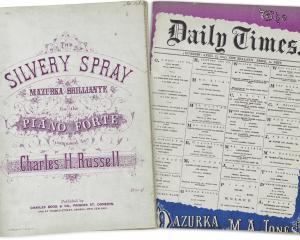
"The eye," claimed a newspaper reporter in 1877 when Otago Museum opened its doors, "is literally bewildered with the superb collection of birds of all countries and climes."

A year later in the published Guide to the Museum Hutton claimed that out of the 114 families of birds, 103 were represented in the galleries and exhibited to the public. Their efforts were not, of course, confined to birds, as early photos show.
Glass-plate photographs of the interior of the museum taken in the early years have extraordinary resolution and at high magnification it is possible to clearly identify some individual birds.
The muttonbird seen above with its wings outstretched and its head turned towards the viewer holds a very distinctive pose. The bird is interesting on two counts. Firstly, it was caught in California between October and May although we don’t know the year. Secondly, it has featured in a 19th-century photographic album of New Zealand’s birds. The famous Dunedin photographers, the Burton Brothers, made several temporary dioramas using the museum’s birds with the aim of showcasing New Zealand’s birdlife and the album was the result. The photos were also shown at the Exposition Universelle de 1889 held in Paris over the summer months, at which more famously, the Eiffel Tower served as the entrance to this international fair.
Prof Parker, the museum curator at the time of the Burton Brothers’ photo shoot was very impressed with the attempt to make a natural-looking diorama. When he showed the resulting photos to the serious-minded members of the Otago Institute he explained that he had "wanted for a great many years to mount New Zealand birds in this way, but there were two insuperable difficulties in the way of doing so; the want of space and the want of money" (Otago Witness September 14, 1888). Some things never seem to change!
- Rosi Crane is an honorary curator in science history.


![‘‘Neil’s Dandelion Coffee’’. [1910s-1930s?]. EPH-0179-HD-A/167, EPHEMERA COLLECTION, HOCKEN...](https://www.odt.co.nz/sites/default/files/styles/odt_landscape_small_related_stories/public/slideshow/node-3436487/2025/09/neils_dandelion_coffee.jpg?itok=fL42xLQ3)









